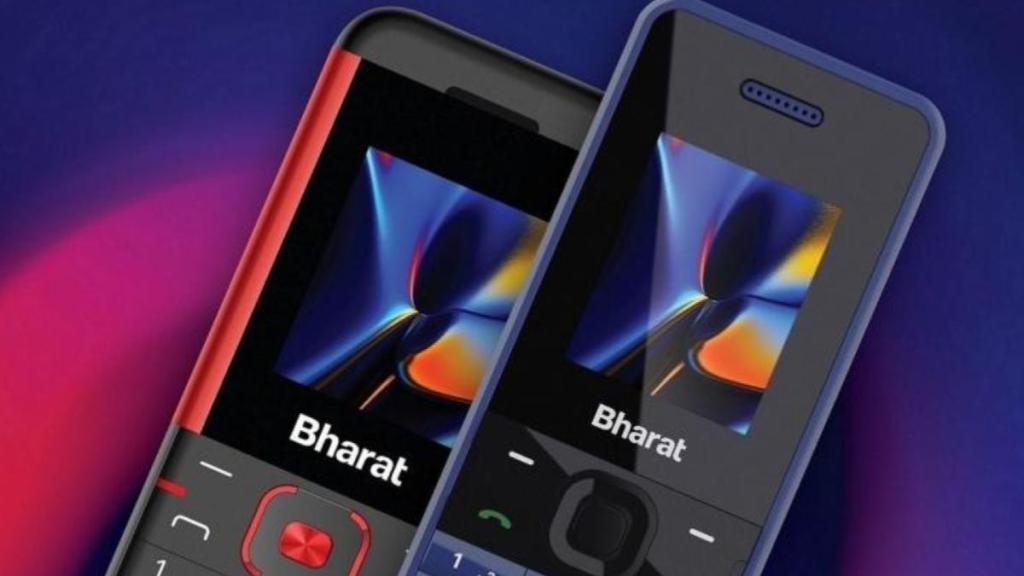The launch of JioBharat phones helped 4G feature phone shipments witness a 300% growth year-on-year in the July-September quarter, according to market analyst firm CyberMedia Research (CMR).
The growth comes on the back of lower price of JioBharat phones at Rs 999, along with features like UPI (Unified Payments Interface), and variety of applications in the phone. In fact, JioBharat K1 Karbonn and JioBharat V2 collectively have a 63% market share in the 4G feature phone segment, analysts said.
“4G feature phones showed tremendous growth, driven by Aspirational India and the demand for companion devices in Urban India,” said Shipra Sinha, analyst- Industry Intelligence Group at CMR.
The growth trend in 4G feature phones comes, even as the overall feature phone market saw a decline of 6% year-on-year in the July-September quarter. According to CMR, 2G feature phone shipments decreased by 27% year-on-year. All the major companies, including itel, Lava, Nokia, Micromax and Karbonn witnessed a fall in the shipments of 2G feature phones.
Fall in 2G feature phone shipments indicate that the transition from 2G to 4G, that has been slow, is gradually picking up pace due to low cost internet-enabled 4G feature phones. Currently, there are about 250 million 2G feature phone users in the country.
Following the launch of JioBharat, the share of 4G feature phones in the overall feature phone shipments increased to 32% during the quarter, according to Counterpoint.
Analysts at brokerage house Jefferies estimate an annual addressable market of 60-65 million users for JioBharat. “We expect Reliance Jio to gain 55 million subscribers by March 2026, the brokerage said in a recent note.
Lately, Dixon Technologies had also won a large order from Reliance Jio to manufacture 15 million Jio Bharat Phones.
If Jio as well as the industry succeeds in managing to transition a bulk of feature phone users to smartphones, the gains will be significant as average realisation per user (Arpu) almost doubles on a 2G user migrating to 4G.
Besides the market trend in feature phones, 5G smartphone shipments continued to lead market growth, with 44 new launches, and a 57% market share during the quarter.
According to CMR, 5G smartphones worth $11 billion were shipped in the July-September quarter, with a 78% year-on-year growth. Samsung led the Indian 5G smartphone market with a 23% market share, followed by Vivo at 16%, analysts said.
Segmentwise, performance shows that the value-for-money smartphone segment (`7,000-25,000) constituted the largest share at 69%. Out of the 59 smartphones launched in the quarter, 36 were part of the value-for-money segment and despite that, the shipments decreased 11% year-on-year, according to CMR data.
The affordable smartphone segment (less than Rs 7,000) experienced a growth of 78% year-on-year. This growth was driven by models like Redmi A2, Poco C50, and Itel A27, collectively capturing a 50% market share.
The premium segment (`25,000-50,000) witnessed an 11% year-on-year growth. Additionally, the super-premium smartphone segment (`50,000 – 100,000) and the uber premium segment (over `1,00,000) grew 87% and 136%, respectively, the CMR data shows.
“Compared to a year ago, smartphone OEMs will exit 2023 with better inventory levels. As we move forward, OEMs will look to maintain a leaner product portfolio, backed by aggressive marketing to gain market share,” said Menka Kumari, analyst-Industry Intelligence Group at CMR.
CMR estimates the overall smartphone shipments for the entire 2024 to grow by 8-9%, against 1-2% decline in shipments for 2023.


